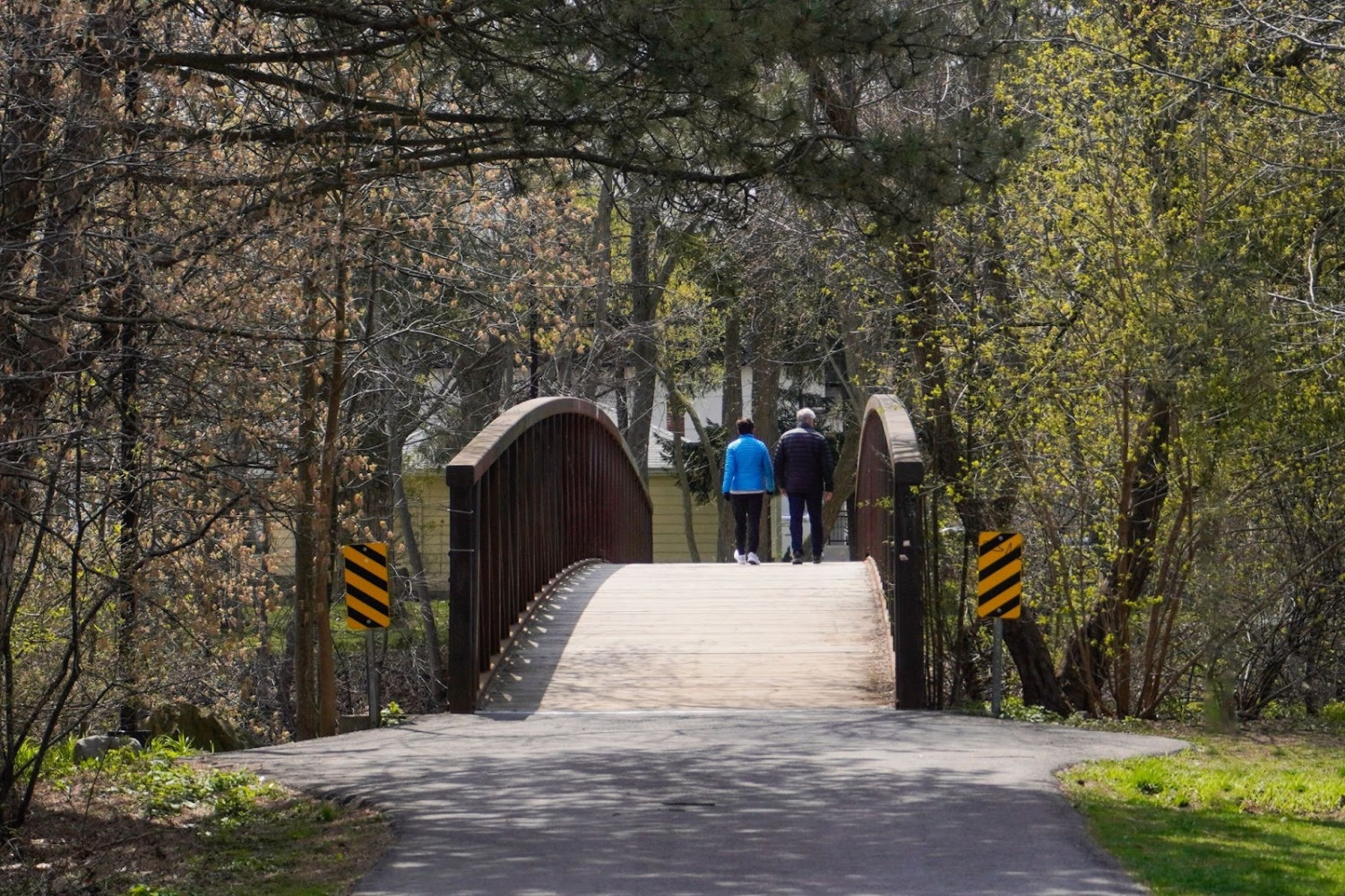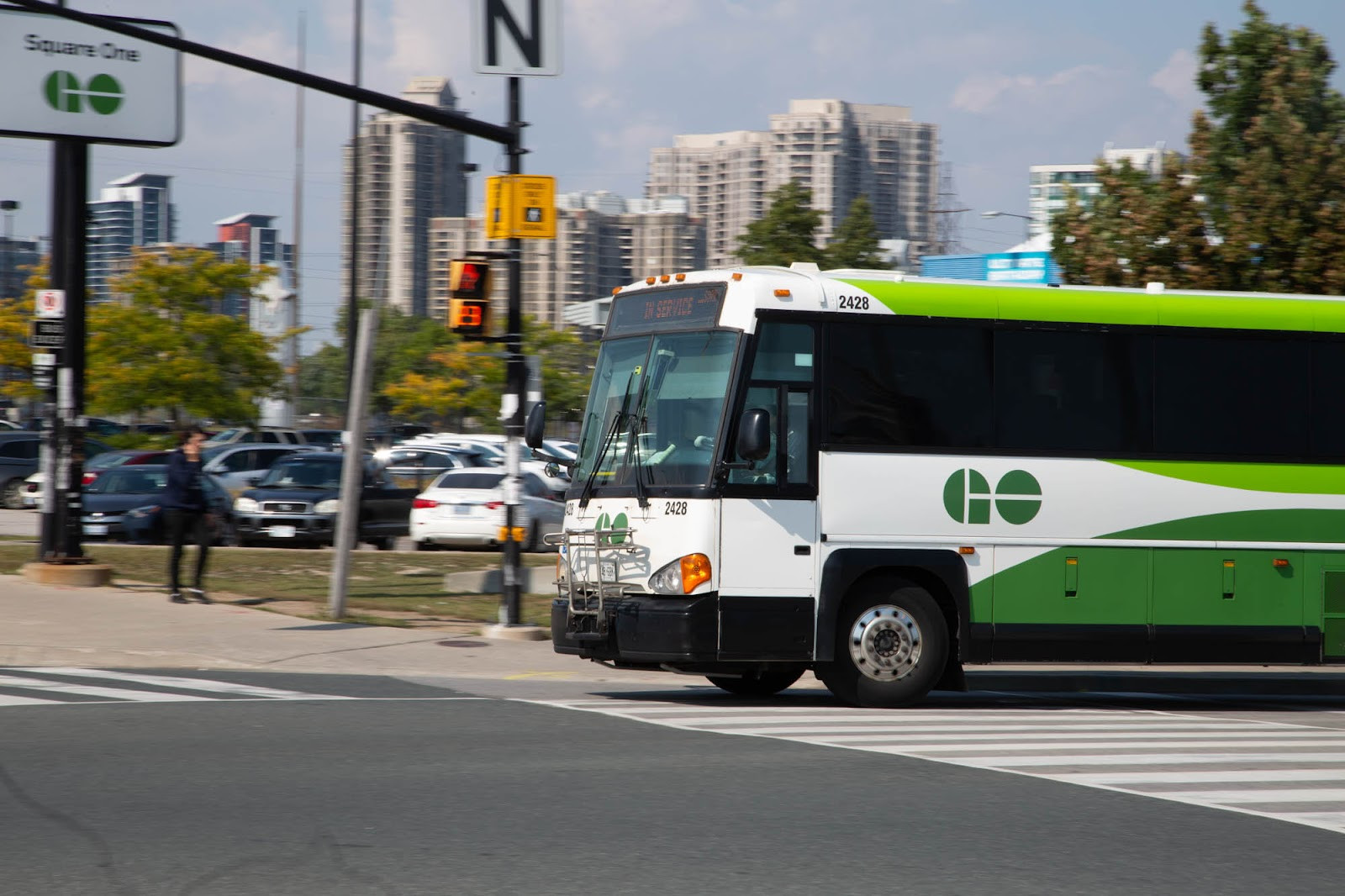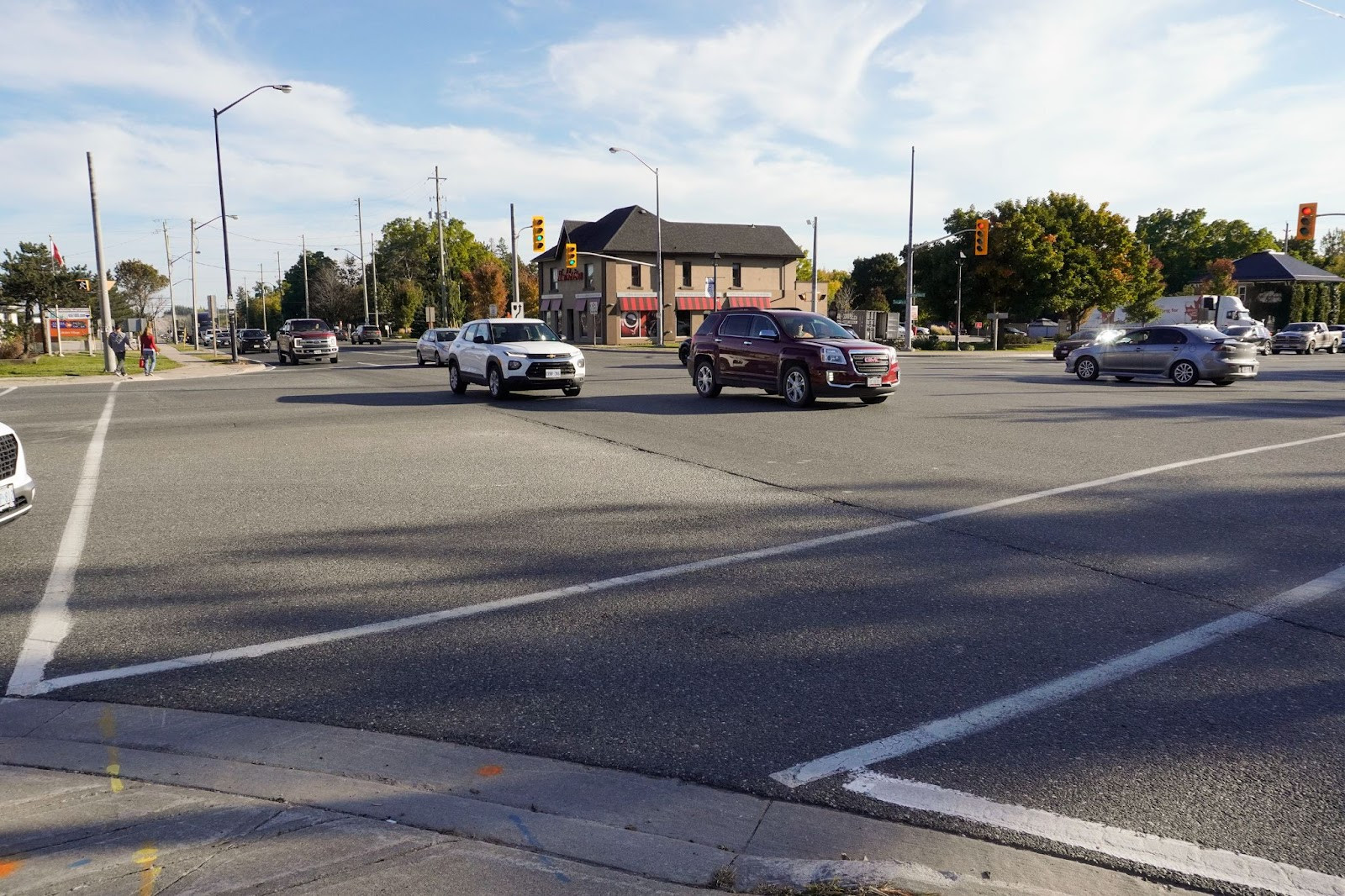
PC growth plan could derail Peel’s sustainable transportation strategy
The Region of Peel is optimistic that 50 percent of trips taken within its boundaries will use greener methods by 2041, a goal it set out in its 2018 Sustainable Transportation Strategy.
The STS lays out plans to increase the number of trips taken by forms of active transportation such as walking and biking, public transportation, and carpooling, to reach a goal that is projected to reduce pollution and save the Region $72 million in costs related to CO2 emissions annually.
This is being threatened by the Doug Ford government and the subdivision development industry whose members have assembled lands across the GTA for highly profitable sprawl-style growth that will kill much of the momentum for transit use and active transportation.
The latest Implementation Update for the Sustainable Transportation Strategy (STS) outlines the success the Region has achieved including a current sustainable modal share of 41 percent, the addition of 11.2 kilometres of active transportation pathways in 2022 and collaboration with Metrolinx on the development of high-order transit throughout Peel such as two-way, all-day 15-minute commuter train service on the Milton Go Line.
The STS falls in line with the Region’s Climate Change Master Plan which sets a target of a 45 percent reduction in emissions from 2010 levels by 2030.

(The Atmospheric Fund)
According to The Atmospheric Fund (TAF), the transportation sector is the second largest emitter across Peel, causing 37 percent of carbon emissions, second only to buildings at 39 percent in 2017. TAF did note that transportation emissions are rapidly increasing across the region.
“The transportation network, whether it's built roads and so forth, are going to have an impact on the physical environment. So I don't think we can ever envision a transportation system that has absolutely no footprint on the world,” Eric Miller, a professor of civil engineering and director of the University of Toronto Transportation Research Institute, said.
The goal of municipalities is not to have zero impact, but to rapidly decrease the impact that their transportation methods have on the environment.
The dependency on single-use vehicles as seen by the volume on roads and highways is largely due to convenience, an incentive that will only become more attractive with creeping sprawl which is being pushed forward by the PC government, making it less viable for commuters to use transit or other modes of transportation that rely on dense built environments.
Municipalities, like Peel, have developed sustainable transportation strategies in order to limit the impact travel has on the environment, primarily by reducing GHG emissions.
The STS does not aim to end traditional transportation but encourages residents to choose more sustainable options like walking and biking, public transit and carpooling. The use of electric vehicles is also a key consideration.
“Clearly walking and bicycling have minimal impacts on the environment,” Miller said. “Transit ideally should be electrified, but even if it's not, if it's being used where it is effective, it has low, low impact. Automobiles, if they're electrified, at least in terms of their on road impact, are relatively low.”
While he supports the effort of municipalities to increase what is being referred to as a “sustainable modal share” meaning the percentage of transportation trips that are taken using active transportation, public transit or carpooling, he stresses the particular importance of public transit because active transportation can only get people so far.
“Not everybody is going to work and go to school and shop within a 10 or 15-minute walk of where they live, that's just impossible. So there's always going to be a very significant proportion of trips that are going to be traveling going distances that are certainly beyond walking and, in most cases, beyond bicycling,” he said. “So while active transportation is certainly a nice and important part of the overall approach, we have to be thinking about how the entire urban region works and that means cars and transit.”
The problem, he says, is those in power are making public transportation less attractive. The Province’s own transportation master plan for the Greater Golden Horseshoe, which was published in February 2022, and the Metrolinx Big Move Master Plan, stress the importance of elevating public transit systems and modes of active transportation to enhance the way people move. Miller says all levels of government like getting attention for “splashy capital announcements”, such as the electrification of transit fleets, which, while important, do not directly support uptake of transit use.
“Right now, we've been making public transit less attractive, we're cutting frequencies, we're not maintaining the system, we're not adding the capacity,” Miller said. “I think people will always be fairly self centered in the sense of, ‘I have to get through my day, how can I best get through my day?’”
“I think people will use public transit, if it's an attractive, convenient service.”

If public transit is not significantly less expensive for users and convenient, many will not consider it.
(The Pointer files)
The 2023 provincial budget invests 27.9 billion in highway projects and while it also commits $70.5 billion for transit projects over the next 10 years, a $9 billion increase from the previous year, NDP public transportation critic Joel Harden previously told The Pointer there is no funding to help municipalities recover from what has been a “death spiral” for transit since the start of the pandemic.
While Mississauga and Brampton have largely recovered transit ridership to levels comparable to before the pandemic, transit’s share of total trips taken by the population has decreased significantly. In 2016, 20 percent of trips taken across the Region were on public transit. In 2021 that number decreased to six percent. The Region notes the survey used to determine the 2021 number used a smaller sample size leading to some discrepancy in the data, but regardless, the decline is sharp.
The actions of the PC government over the past six months will likely make the situation worse. Research from the David Suzuki Foundation found Highway 413, if built by the PCs (the project could be cancelled by the federal government which is reviewing it), will cost approximately $8 billion and move about 7,000 people per hour at peak times. In contrast, $7 billion could be invested in advancing public transit systems that would move between 22,000 and 29,000 people per hour for less cost.
In the past six months, the PCs have rammed through Bill 23 and changes to the Greenbelt Act which will open up significant tracts of land for development. The latest proposed legislation, Bill 97, if passed, will eliminate the concept of settlement boundaries allowing municipalities to spread into their rural areas. These remote spaces are already not serviced by alternative transportation options.

Municipalities have raised concerns that the sprawl growth created under Bill 23 will not result in complete communities that allow residents to use active transportation to get around.
(Alexis Wright/The Pointer)
Despite Ford’s blunt claim during an announcement made in Mississauga earlier this year that he would make municipalities “whole”, compensating for revenue losses due to his growth legislation, staff at the Region have expressed concerns with the lack of information provided by the PCs to show exactly how municipalities will be “made whole”.
The Region of Peel released a report earlier in the year that found road, water and wastewater infrastructure associated with the 246,000 homes the Region is supposed to build by 2031, under Bill 23, would cost $20.4 billion. The Region also estimates there will be a $567 million development charge shortfall (fees collected from builders to create the infrastructure needed by those who buy the new homes) due to Bill 23, which will cut into local funding for transportation and public works.
It is well documented that sprawl will increase car dependency. The inability of the Region to provide alternative transportation services in new communities that are built, and the failure of the Province to provide support, will create even greater reliance on personal vehicles.
“Greenbelt-type development, which the provincial government is very actively promoting, will be very unsustainable,” Miller says. “They're going to generate a tremendous amount of automobile usage, they will not be supportive of transit. Maybe these communities might be a little walkable or bikeable themselves, but I suspect they will not be complete communities.”
“It's not just about housing, it's about where jobs are, where stores are, where schools are: the infrastructure.”
Peel’s Sustainable Transportation Strategy determined that if travel habits remain the same, by 2041 there would be 45 percent more vehicles on the road during the morning peak period—approximately 190,000 more cars.
“With an expected 40 percent increase in population in Peel by 2041, this expected growth cannot be accommodated in a ‘business as usual’ manner that perpetuates a transportation system oriented towards supporting automobiles being driven by a single person,” the STS warns. “To accommodate growth in this manner would impose high costs on Peel’s quality of life and economic competitiveness, and lead to unsustainable increases in traffic congestion and environmental impacts.”
The STS was published in 2018, meaning the numbers used to determine these conclusions were much more conservative than the numbers now being considered under Bill 23, which calls for about three times the number of new home starts annually than the historic rate.
When asked about how the Region expects to meet the 50 percent sustainable transportation share target considering the PCs’ approach to growth and development, Tina Detaramani, manager of Transportation Systems Planning at the Region, pointed to a staff report from March that outlines three strategies the Region will be implementing to accommodate the much higher allocation of new homes under Bill 23. They include aligning growth to existing infrastructure, which, if developers cooperate, would contain runaway sprawl by forcing or incentivizing builders to focus on areas with existing roads, transit and urban design conducive to walking and cycling.
But Detaramani did not give any specifics on how the unprecedented pace of growth facing parts of Peel will impact efforts to get residents out of their car.
Email: [email protected]
Twitter: @rachelnadia_
At a time when vital public information is needed by everyone, The Pointer has taken down our paywall on all stories relating to the pandemic and those of public interest to ensure every resident of Brampton and Mississauga has access to the facts. For those who are able, we encourage you to consider a subscription. This will help us report on important public interest issues the community needs to know about now more than ever. You can register for a 30-day free trial HERE. Thereafter, The Pointer will charge $10 a month and you can cancel any time right on the website. Thank you
Submit a correction about this story


